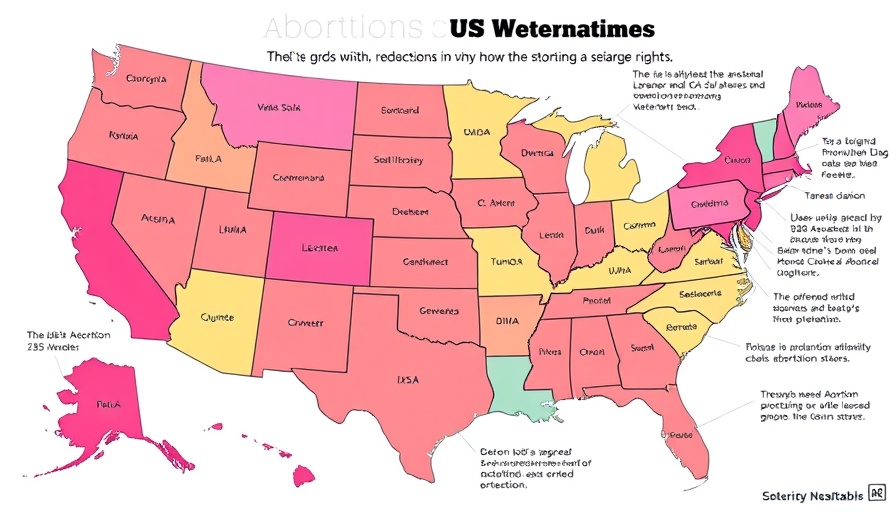
Understanding the Shift in Abortion Rights
In the wake of the Supreme Court's historic decision to overturn Roe v. Wade in June 2022, the landscape of abortion rights in the United States has seen a turbulent shift. States suddenly found themselves with the power to dictate the accessibility of abortion, and in this uncertain environment, a significant development has emerged: voters in ten states have passed constitutional amendments aimed at safeguarding abortion rights. However, the mere enactment of these protections does not automatically nullify existing laws that impose restrictions on abortion access, such as waiting periods or mandatory parental consent.
The Legal Challenge Landscape
As it stands, ongoing litigation is essential for invalidating these restrictive laws. Legal battles can stretch over years, leaving individuals seeking abortion care navigating a maze of judicial processes. The urgency of this situation is underscored by the fact that some state legislatures, emboldened by political ideologies, have enacted laws that mirror previous restrictions, complicating the efforts of advocates who must now tackle multiple legal challenges. This protracted legal struggle creates significant barriers for individuals needing reproductive healthcare.
Recent Developments in State Amendments
States like Arizona, Michigan, Missouri, and Ohio are currently grappling with the implications of their recently passed constitutional amendments, which aim to protect abortion rights. Legal advocates in these states have initiated lawsuits to challenge existing laws that they argue contradict these newly established protections. The nature of these amendments varies widely; in some instances, the language explicitly safeguards a right to abortion, while in others, it opens up broader interpretations of reproductive freedoms.
Challenges Beyond Legal Language
Interestingly, in Montana, the path for advocates has taken a different course. Since challenges against prior restrictions were filed before the constitutional amendment was officially enacted, advocates lean on precedent set forth by previous state supreme court decisions that reflect the state's protective stance on abortion rights. This situation poses a unique dynamic in both understanding and challenging existing laws.
Community Voices: Stories of Advocacy
Among the voices in this ongoing fight are grassroots advocates who work tirelessly to navigate the legal complexities while providing support to individuals facing these hardships. Their stories are a testament to resilience in the face of adversity. Individuals, many of whom identify as essential workers or caretakers, express their need for accessible abortion services and the emotional weight of battling against restrictive laws.
Future Implications and Trends
So, what does the future hold? The ultimate outcome of legal challenges aimed at overturning abortion restrictions will significantly depend on interpretations by state supreme courts. Legal scholars suggest that each state's handling of similar challenges will create a patchwork of protections across the nation, impacting not only current law but shaping future political landscapes and community health standards.
Empowering Yourself with Knowledge
As citizens, understanding these changes and the legal nuances associated with abortion rights is pivotal. Engaging with local advocacy groups, participating in town hall meetings, and staying informed about state legal developments can empower individuals to take an active role in discussions regarding reproductive rights.
This labyrinth of court battles, state laws, and personal stories underscores a significant moment in America’s ongoing dialogue surrounding reproductive rights. To engage further in these critical discussions and understand how they may impact you and your community, consider attending local information sessions or reaching out to grassroots organizations focused on reproductive health.
 Add Row
Add Row  Add
Add 




Write A Comment